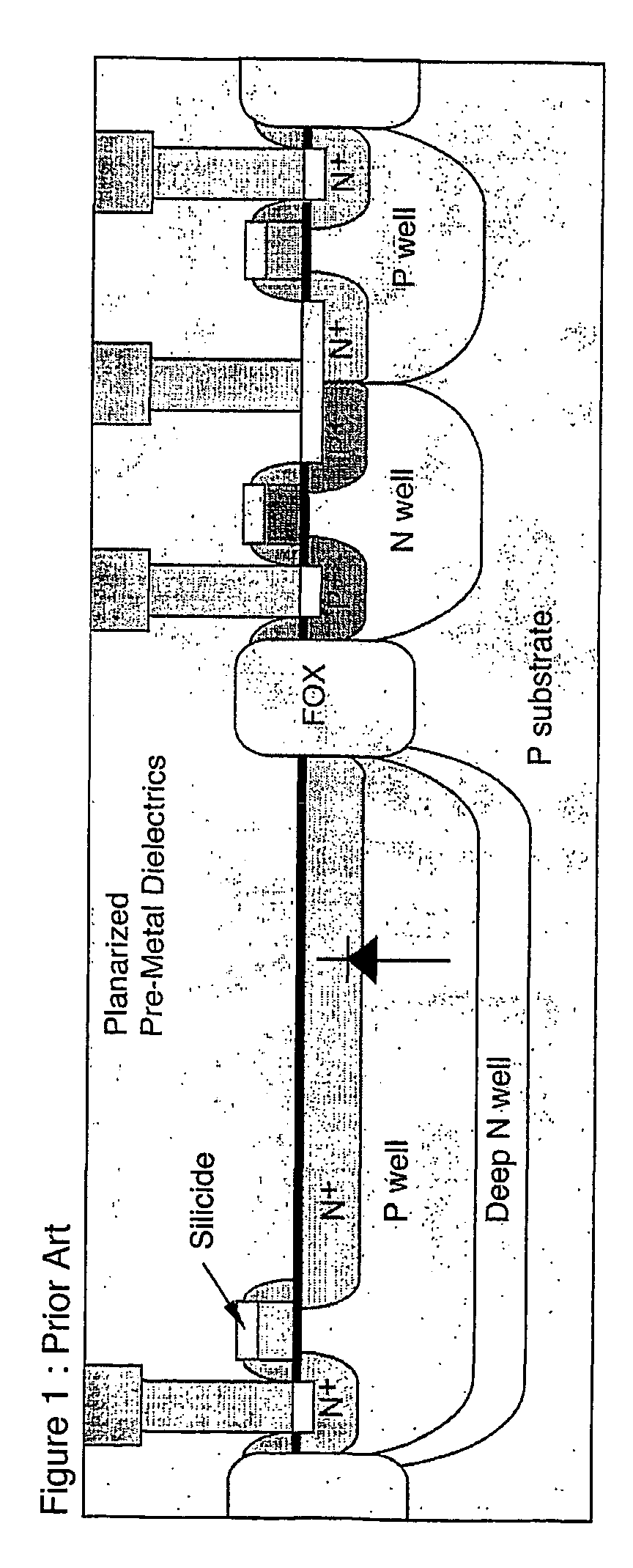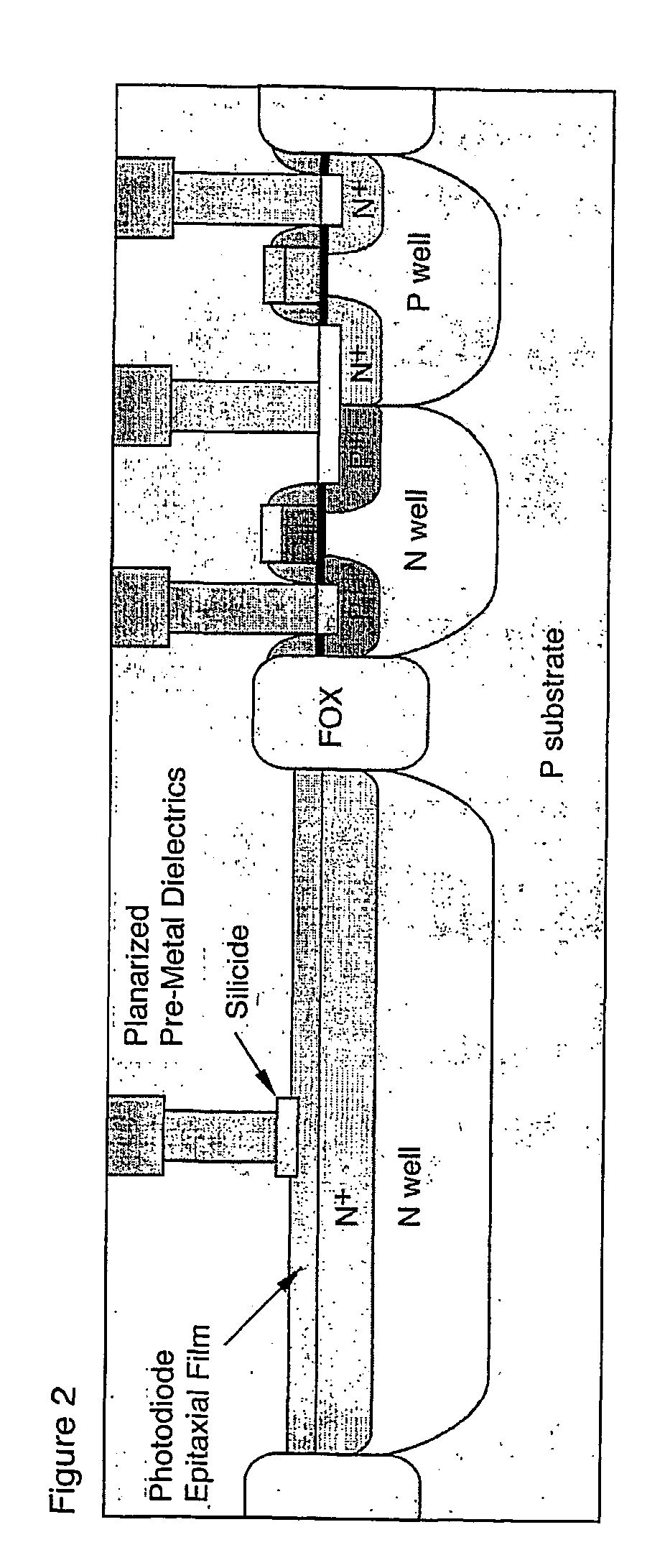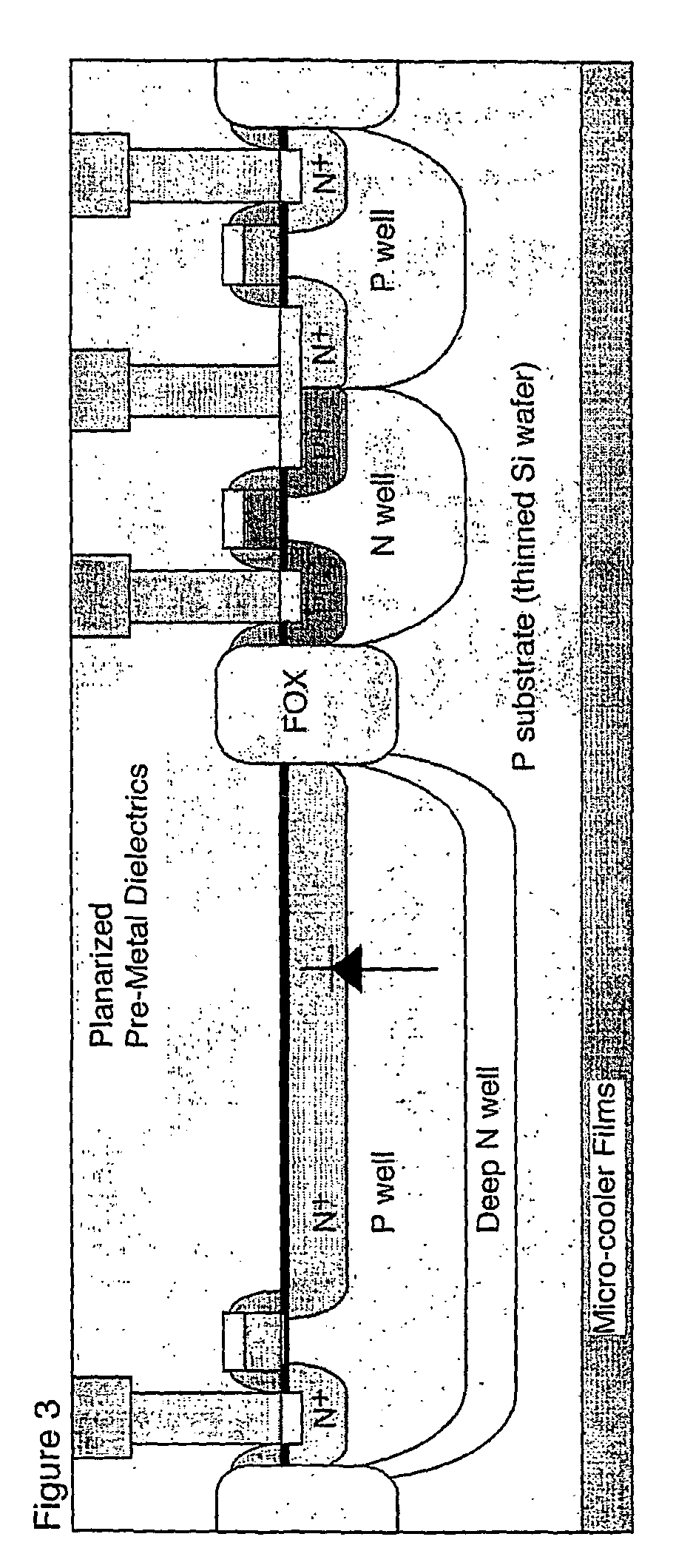Method of fabricating heterojunction photodiodes integrated with cmos
a photodiode and heterojunction technology, applied in the field of fabricating heterojunction photodiodes integrated with cmos, can solve the problems of inability to detect "solar blind" ultra-violet detection, low efficiency of both devices in near infra-red detection, and low efficiency of both devices, so as to reduce the lateral dimension and reduce the mass
- Summary
- Abstract
- Description
- Claims
- Application Information
AI Technical Summary
Benefits of technology
Problems solved by technology
Method used
Image
Examples
Embodiment Construction
[0071] The present invention is based on the following knowledge. For active media made of bulk semiconductor materials, that is, without quantum confinement in any of the three spatial directions, the absorption depth for a given photon energy or wavelength (color) is determined by the band-structure of the bulk material.
[0072] The absorption efficiency of a semiconductor material for photons varies as a function of wavelength. For wavelengths around 650 nm, the coefficient of absorption of germanium is about 50 times larger than that of silicon, or conversely, for that wavelength, the same amount of light can be absorbed in a Ge film 50 times thinner than in Si (S. M. Sze, "Physics of Semiconductor Devices", Wiley, New York 1981, p.750, FIG. 5).
[0073] It is known that the absorption properties of a given semiconductor material can be changed by alloying with other materials and / or by "quantization effects" resulting from "reduced dimensionality" in at least one spatial direction. ...
PUM
 Login to View More
Login to View More Abstract
Description
Claims
Application Information
 Login to View More
Login to View More - R&D
- Intellectual Property
- Life Sciences
- Materials
- Tech Scout
- Unparalleled Data Quality
- Higher Quality Content
- 60% Fewer Hallucinations
Browse by: Latest US Patents, China's latest patents, Technical Efficacy Thesaurus, Application Domain, Technology Topic, Popular Technical Reports.
© 2025 PatSnap. All rights reserved.Legal|Privacy policy|Modern Slavery Act Transparency Statement|Sitemap|About US| Contact US: help@patsnap.com



